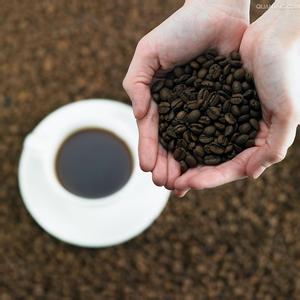What is the difference between low altitude and high altitude coffee beans? the area where the thickness of cocoa beans is different from that of coffee beans
What is the difference between coffee beans at low altitude and at high altitude? the difference between cocoa beans and coffee beans
The influence of geographical location on the flavor of coffee beans is profound. All coffee grows in the tropics, and the altitude at which it grows has a profound effect on the taste of the coffee. From the tropics to 30 degrees north latitude and the mountains south of the equator produce the world's truly high-quality Arabica coffee. Central and South America, South Asia and some Pacific islands, and south-central Africa are also the most important coffee-growing areas in the world.
3000-6000 feet about 1000 meters to 2000 meters above sea level provide ideal conditions for coffee to grow: an average frost-free climate of 60-70 degrees Fahrenheit throughout the year, about 80 inches of moderate rainfall, and abundant sunshine. Coffee beans grow slowly in cold mountain areas, but the slow ripening process makes coffee beans have higher sugar content, more interesting flavor and mellow flavor. At high altitude, the displacement is high, and the fruit taste is more concentrated. The best Arabica coffee-growing areas have very fertile soil, often in volcanic areas.
What kind of coffee beans can be planted at altitude, but high quality, especially manor-grade coffee beans are distributed in the mountains at an altitude of 2500-2500 meters, such as Jamaican coffee, which can only be called alpine coffee at an altitude of 400-600m. Only coffee produced at an altitude of 800-2300 meters can be called Blue Mountain Coffee. In addition, the higher the grade, the higher the altitude, and other areas are also distinguished in this way.
Coffee beans grown at high elevations are hard, dense and have the potential to give full play to their special flavor. The really amazing coffees are grown between 4000 and 6000 feet above sea level, and these beans are picked carefully only during the mature season.
Generally speaking, with the increase of altitude, the aroma of coffee will become more and more prominent and unique. From the temperature and sweetness of Brazilian beans at 3500 feet above sea level to the soaring taste of Ethiopian coffee beans above 6000 feet, it shows that the increase in altitude will make the coffee beans better display the complex and subtle taste.

Important Notice :
前街咖啡 FrontStreet Coffee has moved to new addredd:
FrontStreet Coffee Address: 315,Donghua East Road,GuangZhou
Tel:020 38364473
- Prev

Cleaning method of coffee extraction filter-Delong coffee machine extractor cleaning
Coffee extraction filter cleaning method-Delon coffee machine extractor cleaning 1. Coffee machine brewing head / brewing handle cleaning: (1) after each coffee extraction, remove the coffee handle and pour out the coffee grounds, turn on the cleaning switch, insert the coffee handle, press the hot water out of the washing head using the coffee machine pressure, and clean the coffee handle at the same time. (2) one coffee per extraction.
- Next

Liberian caffeine content-caffeine content of a cup of coffee
Caffeine content in Liberia-caffeine content in a cup of coffee Robusta species, known as coffee RobustaLinden, a leaf rust-resistant variety found in Congo in Africa, is more resistant than Arabica. In fact, it was a mutant of the Congo species (scientific name Coffeacanephora). The name of the Robusta species has become popular, and it is regarded as the same species as the Congolese species.
Related
- What brand of black coffee is the most authentic and delicious? what are the characteristics of the flavor of the authentic Rose Summer Black Coffee?
- Introduction to the principle and characteristics of the correct use of mocha pot A detailed course of mocha pot brewing coffee is described in five steps.
- Which is better, decaf or regular coffee? how is decaf made?
- How much is a bag of four cat coffee?
- How about four Cat Coffee or Nestle Coffee? why is it a cheap scam?
- Which is better, Yunnan four Cats Coffee or Nestle Coffee? How about cat coffee? is it a fake scam? why is it so cheap?
- How about Cat Coffee? what grade is a hoax? which instant coffee tastes better, four Cat Coffee, Nestle Coffee or G7 coffee?
- Process flow chart of coffee making-Starbucks coffee making process what coffee tastes good at Starbucks
- The top ten best coffee beans in the world Rose summer coffee or Tanzanian coffee tastes good
- Yunnan four cat coffee is good to drink?_four cat coffee is a big brand? four cat blue mountain coffee is fake?

